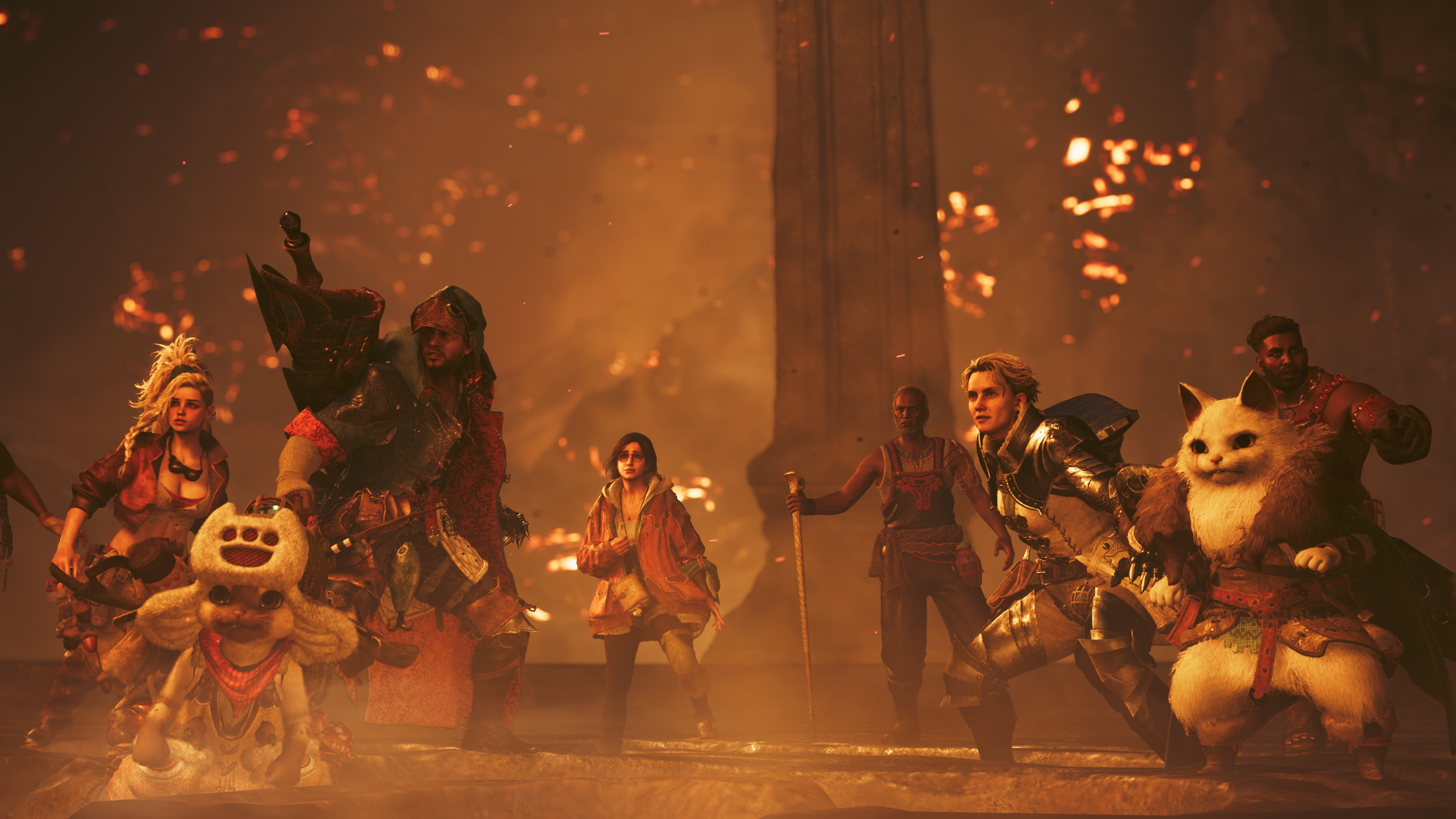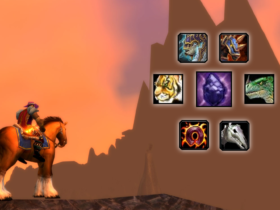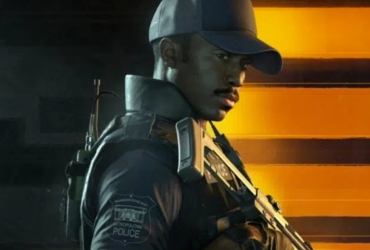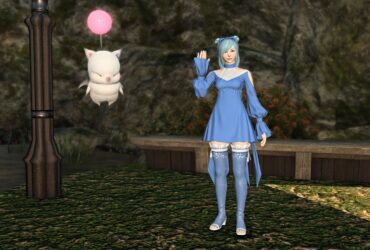Monster Hunter Wilds is quickly becoming my most-played early access game of 2024. Following an open beta which ate 15 hours of my life last month, I recently visited Capcom headquarters in Osaka, Japan to spend five hours with a newer but still-unfinished build of this monster-hunting action-RPG. It was, as director Yuya Tokuda stressed in an interview, not as polished as the final build of the game will apparently be. But it was excellent – refreshingly smooth after the rocky beta, though I could only play on PS5, and almost everything I wanted.
More than ever, Monster Hunter Wilds seems ready to take on its greatest challenge: following up Monster Hunter World, a breakout hit that brought a long-simmering cult classic to a roiling boil. The bones are the same but the presentation is sharper, modernized but still undeniably Monster Hunter. By all accounts, Monster Hunter Wilds feels like the year-devouring behemoth I want it to be, which means five hours simply wasn’t enough. I reckon I’m gonna need another 500.
That’s it, I’m gettin’ me mallet

Key Info
Developer: In-house
Publisher: Capcom
Platform(s): PC, PS5, Xbox Series X
Release date: February 28, 2025
The core game obviously hasn’t changed dramatically since the beta. As a hunter sent to investigate reports of an extinct species in mysterious lands thought to be uninhabited, you strike out to take down some monsters, using their horns and hides to craft increasingly powerful weapons and armor to take on stronger and stronger targets – a familiar spin on a watertight, boss-loaded formula that’s still unmatched after over 20 years.
Even so, playing Monster Hunter Wilds in this setting felt fresh. There was no technical obfuscation this time, no painfully short leash around my neck. This was just the (subject-to-change) opening hours of the game, meaning I had access to more monsters as well as the all-important crafting system. The new and returning monsters are fantastic – one of my new all-time favorites among them – and I’m rapidly warming up to the revised armor skill system. The food, especially the cheesy garlic naan, looks dive-right-in good. Like dolphin Duolingo, everything is clicking.
I spent most of my session bashing skulls with a hammer because my true love, lance, was one of two weapons I was advised not to use since they’re due for “substantial” changes ahead of Monster Hunter Wilds’ release in February. Capcom is promising big upgrades for lance and switch axe, and Tokuda added insect glaive and sword and shield to that list when I asked about it in a roundtable interview. He emphasized control issues and focus mode fiddliness, with many changes informed by beta test feedback. (To the delight of hammer main and Monster Hunter producer Ryozo Tsujimoto, a lot of the people visiting the studio used a hammer.)

As I blitzed through the story quests, a greatsword made short work of creatures with smaller, less hammer-friendly heads, most notably the new spider monster Lala Barina, whose balletic movements and rose theming have quickly won it a place in my heart. Lala Barina was the monster I hunted the most – not to grind materials, but because mastering fights and watching my hunt times go down is a big part of enjoying Monster Hunter for me. This spiny thing moves like nothing else in Monster Hunter, pawing at you with obsidian claws and pirouetting away to launch volleys of paralyzing spores. At once freaky and mesmerizing, it’s an instant classic.
Other newcomers include the fire-breathing Quematrice, who feels like a goth, less-dopey version of the similarly birdlike Yian Kut-Ku. My fellow hammer appreciators will be pleased to hear that it stops just short of presenting its skull on a silver platter, prime for a cracking. Returning crowd favorite Congalala, a big pink monkey that farts on you, is in prime condition too. He’s pink. He farts. He’s perfect.
The pinnacle fight for my session was Uth Duna, a gargantuan leviathan that flops around like a whale that took up sumo wrestling after beaching in Japan. Uth Duna echoes the oceanic beauty of Monster Hunter World’s Elder Dragon Namielle, crimson scales draped in pearlescent fins. It gave me more trouble than anything I’ve encountered in Wilds, including Rey Dau in the beta. It moves like a water bed with legs and many of its attacks send disruptive waves splashing around the arena – a fun way to handle AoE attacks that makes World’s Lunastra look even worse by comparison. It slams and bops and belly flops with quaking impact, the soundtrack swelling perfectly to really sell it. I thought this would be a forgettable ‘walking hitbox’ type of monster, but it ended up being my second-favorite after Lala Barina.
A new-fangled gear system

All of my hunts felt better than the Monster Hunter Wilds beta for a few reasons, even without the performance bump. For one, hit-stop is back, baby. I could sense those charged swings in my palms. It’s not Monster Hunter 4 Ultimate levels of oomph, but it’s there and that’s what matters. Tokuda said they were actually encouraged by all the Wilds beta players clamoring for more hit-stop feedback after Monster Hunter World’s audience apparently hated it, and finishers will be even juicier in the full game.
It felt like monsters didn’t run away as often as they did in the beta, either, perhaps due to the map having fewer large monsters in town to cause turf wars and clashes. I was able to kill most monsters in one or two areas, which is about what I’d expect. The fact that I could actually craft gear to hunt monsters more efficiently helped, and this ended up eating a sizable chunk of my session. The process of crafting or upgrading a weapon is pretty much unchanged from World or Rise so far – a tree of options with material requirements – but I get the impression that there’s much more customization to come. The headliner here is how skills are now split between your armor and weapons, with weapons themselves carrying more offensive and specific skills. Here are a few combinations that stood out to me:
- Attack boost and guard on a lance
- Charge Up on a hammer, and Slugger on another hammer
- Rapid Morph on a charge blade
- Focus on a greatsword

One goal here, Tokuda tells me, is to support the two-weapon system, which lets you change weapons during a hunt by briefly mounting your Seikret bird, by tying some skills to your weapons and letting your armor bring the more generalist and defensive skills. “You can also add decorations and customize it to your liking so that you find your favorite way of hunting,” he says.
I specifically asked if our end-game loadouts will match the setups we had in World or Rise in terms of skill quantity and level. Tokuda said they’ve added new skills, preserved some iconic ones, and adjusted or compressed a few others (from five ranks down to three, for instance), but didn’t share what a maxed loadout may look like, presumably for spoiler reasons. More needs to be seen here – early-game builds don’t allow for much depth – but so far I like the idea. It’s different, it gives weapons more vectors than attack and sharpness and slots, and it lets overlooked but comfy defensive skills shine a bit brighter. I just hope the grind to upgrade weapons is a rewarding one, and that maxed loadouts don’t feel neutered. This needs to be more than a way to justify the two-weapon system.
Onward to 2025

I’m looking over my post-beta Monster Hunter Wilds wishlist and having a hard time coming up with anything that wasn’t noticeably improved in this updated build. The UI is still cluttered by unnecessary information and the item pouch feels a bit worse than it did in recent games. If those are the only negatives I can come up with at this point, we’re sitting pretty. Several elements have also improved on World, the closest direct comparison for Monster Hunter Wilds, and Rise, the most recent mainline game.
Monster Hunter Wilds’ story is starting to come into focus, and it seems surprisingly strong for games that typically handle narratives by handing you a sword and a guild card then pointing at the nearest monster and saying “kill that, for research.” So far, Wilds does a much better job communicating the importance and purpose of hunters, the danger some out-of-control monsters present, and the motivations and personalities of your allies. It’s all ultimately set dressing for a game where you’ll inevitably research a monster into hamburger meat so you can research its offspring into a nice hat, but it is decently compelling set dressing, with cutscenes aplenty.

“I left this five-hour preview with renewed hunger and impatience.”
For a notoriously dense series, Wilds paces and explains itself pretty well, too, which in Monster Hunter terms means it’ll probably only be kind of confusing for newer players. Key quests are teed up a bit more like a traditional RPG in bespoke chapters, new areas and mechanics are introduced gradually, and side quests are clearly labeled in your periphery. “Hey hunter,” they seem to say, “if you’re on the ass end of the ass-kicking, try upgrading your gear a bit!” The soul and flow of Monster Hunter are unmistakable, but you can tell Capcom has been working on ways to make Wilds more appealing and approachable to a massively broadened audience post-World.
I have played Monster Hunter Wilds for 20 hours at this point, but exclusively in the worst ways possible. The magic of Monster Hunter is setting your own goals, taking your sweet time getting there, experimenting with weapons and builds, and messing around with friends at every opportunity. Rushing through five early hours to see and record as much as possible at a press event is not the way to play, and five hours is nothing. That is a snack. That’s exactly 1% of my Monster Hunter World play time. Even so, I left this five-hour preview with renewed hunger and impatience. February 28, 2025 can’t come soon enough. Monster Hunter Wilds continues to look and feel great, and now it actually runs encouragingly well, at least on PS5. The PC version still has a big check to cash.
Monster Hunter Wilds is set to release for PC, PS5, and Xbox Series X as one of our most anticipated new games of 2025. We’ll have more to share on the game from our time at the studio this week, so keep coming back to GR+ for more.












Leave a Reply